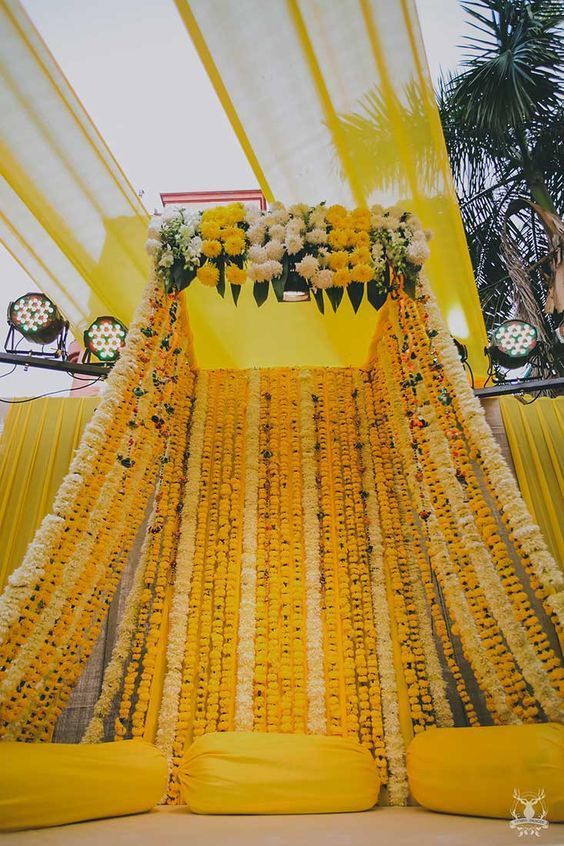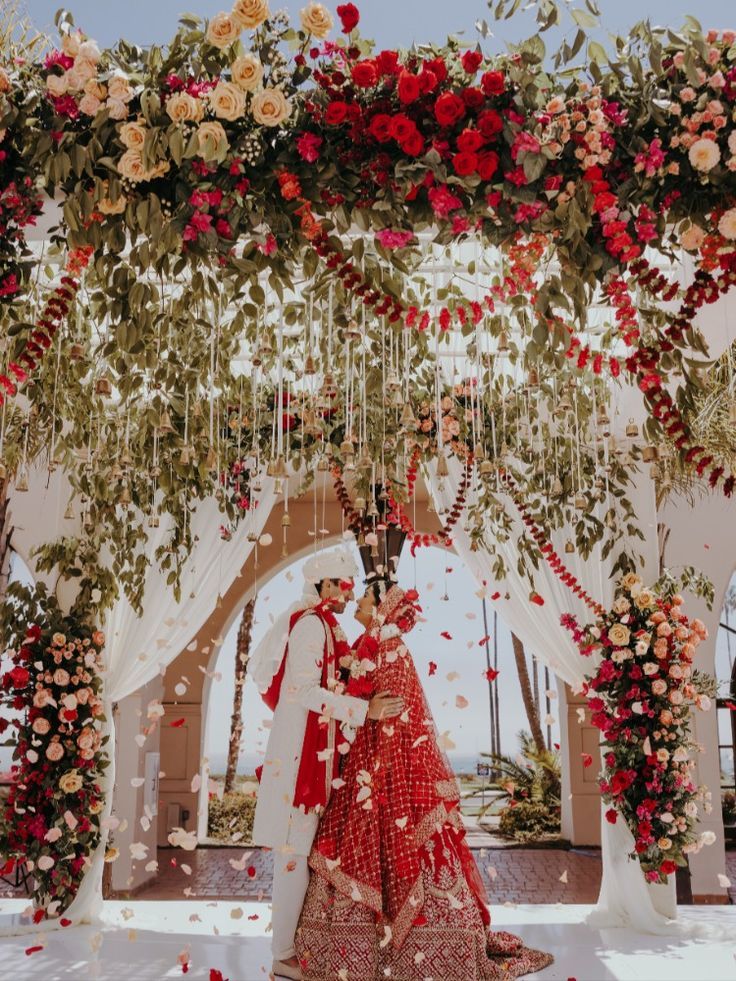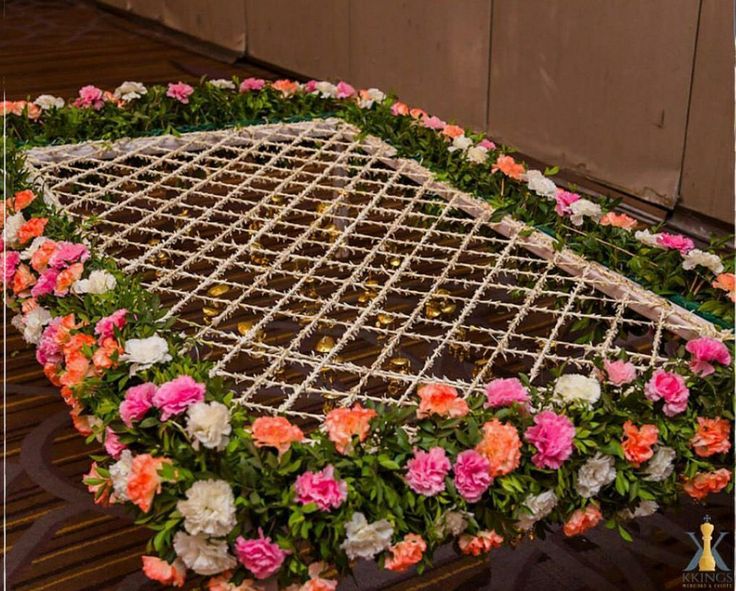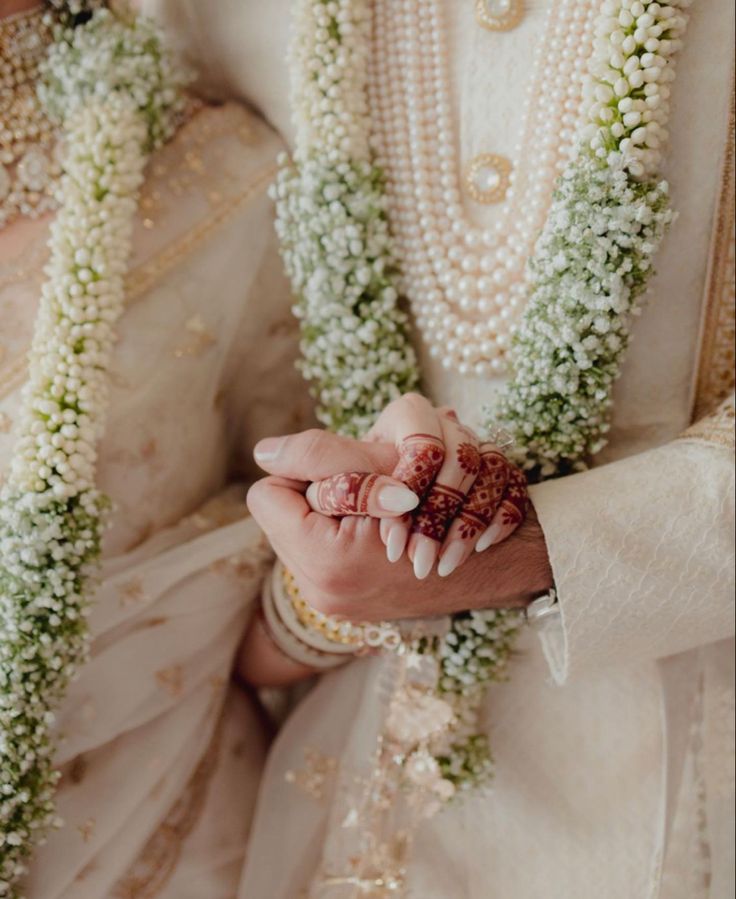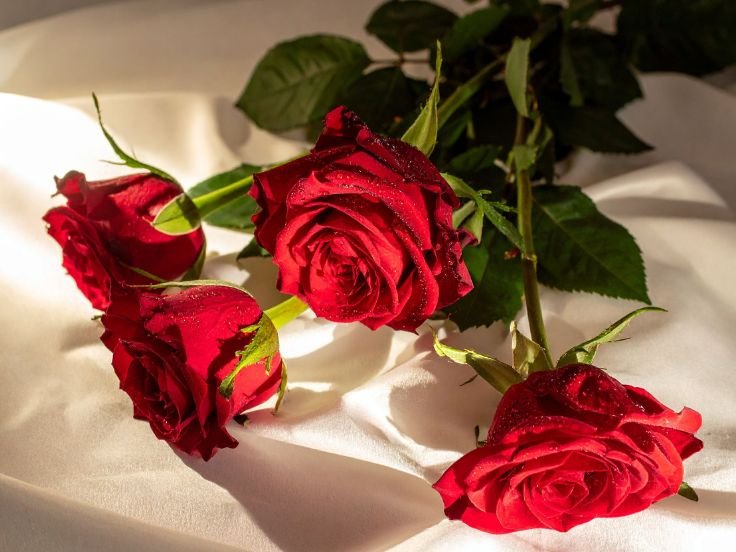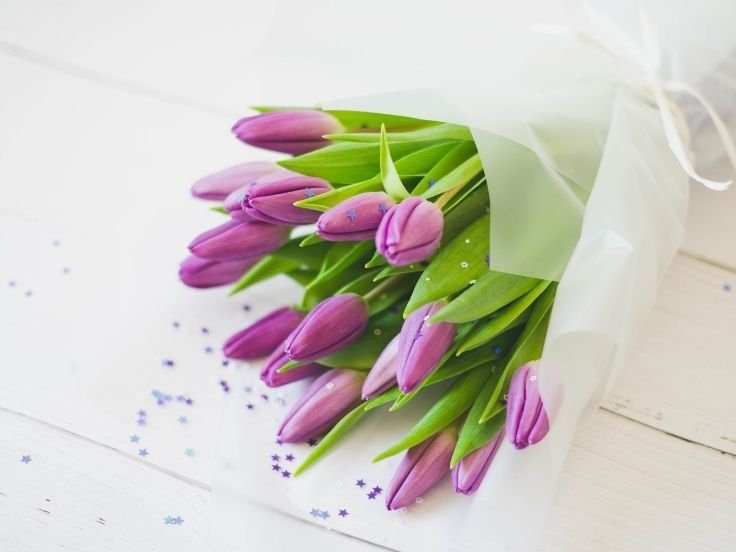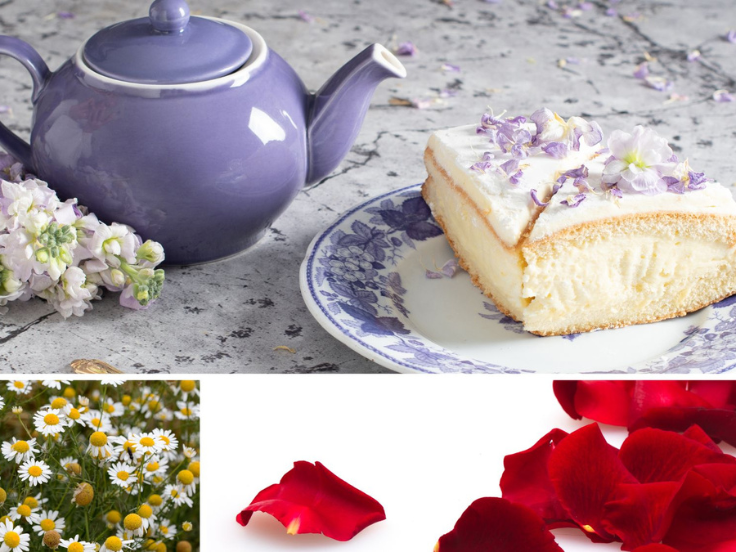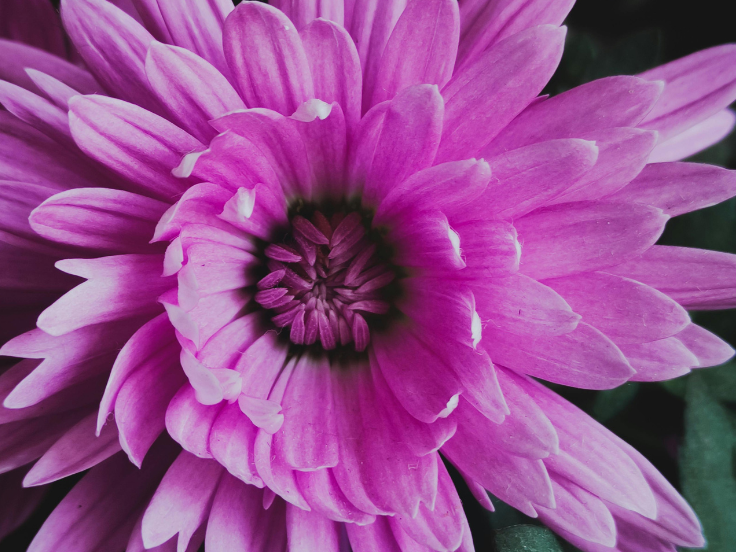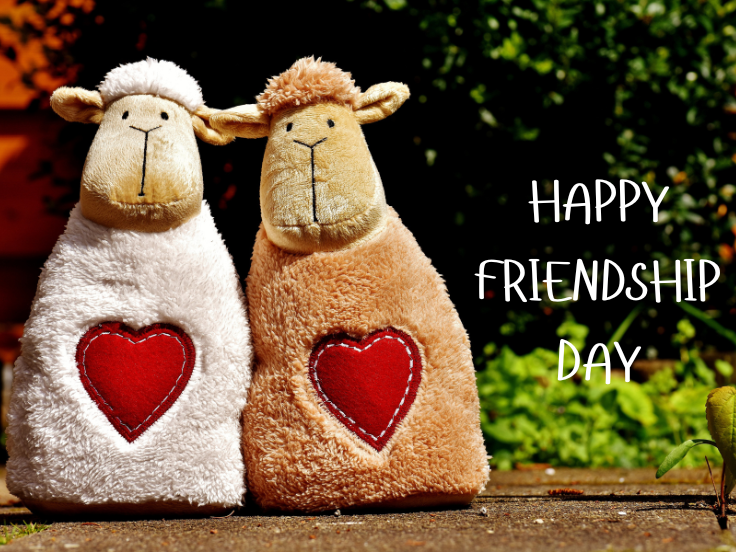Indian weddings are incomplete without florals, which symbolize tradition, spirituality, and beauty. Every ceremony leading up to the actual wedding, from the pre-wedding rites to all the main events, employs distinct floral motifs. Here are a few popular choices for floral arrangements and bouquets used in Indian weddings.
Pre-Wedding Customs
Pre-wedding customs such as Sangeet, Mehendi, and Haldi typically involve rituals performed prior to the wedding. Flowers like marigolds and roses, which represent prosperity and happiness, decorate these events. According to Indian customs, the Haldi ceremony is considered an auspicious event and symbolizes a life of prosperity for the couple who are stepping forward and beginning their new life together. It frequently incorporates or employs florals, such as vibrant yellow marigolds, carnations, and gerbera daises.
The Nuptials
The actual wedding ceremony is the most extravagant in terms of floral arrangements. Popular floral and blooming plant choices for weddings in South India include jasmine (mogra), lotus, firecracker flowers (kanakambara), and tulsi (holy basil), often fashioned into garlands for the bride and groom. The sweet fragrance of jasmine flowers represents sensuality, love, and purity.
Pearls, ribbons, and beads adorn these garlands to accentuate their aesthetic appeal and beauty. It’s customary to shower rose petals on the couple during some rites, like Saptapadi (seven steps).
Hinduism reveres the lotus, another important flower. It is frequently used to decorate the mandap or bridal altar, symbolizing divine beauty and purity. Orchids and tuberoses are also popular in North India for garlands and mandap décor.
The Chadar Ki Phoolon
The flower canopy, also called phoolon ki chadar, is a noteworthy element of the bride’s entrance in North Indian and Sikh wedding ceremonies. Wisteria, jasmine, roses, and lotuses make up this elegant and beautiful addition to the wedding.
Garlands: Floral Jaimala
Jaimala, also known as Varmala, is the exchange of garlands and one of Indian wedding customs’ many key moments. Popular options for the making of garlands are inclusive of roses, marigolds, and lotuses. The choice of florals is based on preferences in terms of region; for instance, lotus, firecracker flowers (kanakambara), jasmine (mogra), and tulsi (holy basil) are popular options in South Indian weddings, and in North Indian weddings, roses, jasmine, and marigolds are common.
The décor for the wedding reception
Common flowers for creative and elaborate floral arrangements for the wedding reception include tulips, orchids, and roses. Designers create elaborate table decorations, centerpieces, and flower walls to captivate guests and highlight the unique preferences of the couple. Hydrangeas and peonies are the other two florals that have become fashionable and popular in recent years for contemporary and opulent weddings.
Conclusion
Indian wedding flowers aren’t just décor; they have rich symbolism and rich cultural implications. Every flower, from roses and orchids to jasmine and marigolds, lends blessings and beauty to the couple’s new life together. Florists help create unique experiences that reflect heritage and personal tastes by incorporating traditional floral elements into contemporary weddings.
Gulmahal has many products and services especially catered for Indian weddings.




